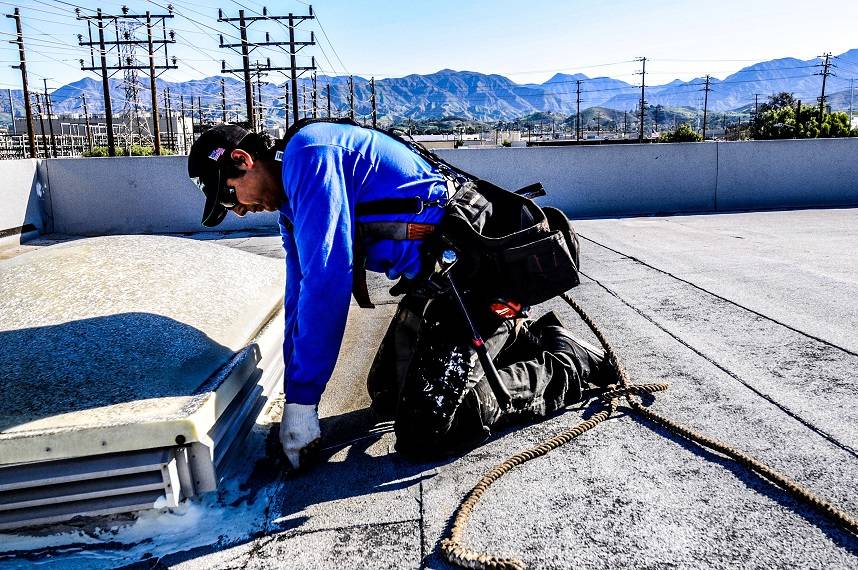Schedule Free Estimate
8 New Pros And Cons About TPO Roofing
TPO (Thermoplastic Olefin) roofing has been gaining popularity in recent years in Los Angeles, as a cost-effective and durable alternative to traditional roofing materials. TPO roofing is made of a single-ply membrane that is easy to install and offers excellent energy efficiency, making it a popular choice for commercial and residential buildings alike. However, like any roofing material, TPO has its pros and cons. In this article, we will explore eight new pros and cons of TPO roofing to help you make an informed decision when choosing a roofing material for your building.
The Pros of TPO Roofing:
- Energy efficiency: is highly reflective, which helps to reduce the amount of heat absorbed by the roof. This can result in lower energy bills and a more comfortable indoor environment.
- Durability: is highly durable and can withstand harsh weather conditions, including extreme heat, cold, and heavy rain. It is also resistant to UV rays, which helps to prevent cracking and fading.
- Low maintenance: requires minimal maintenance, making it a cost-effective option over time. It is also resistant to algae and mold growth, which can help to maintain its appearance.
- Easy installation: is easy to install, making it an ideal choice for new construction or roof replacement projects. The sheets are typically welded together using heat to create a seamless, waterproof membrane.
The Cons of TPO Roofing:
- Puncture resistance: may not be as puncture-resistant as other flat roofing systems, such as EPDM. This may require periodic inspections and repairs.
- Limited lifespan: may have a shorter lifespan compared to other roofing options, such as PVC. It typically lasts between 15-20 years, depending on various factors such as weather conditions and maintenance.
- Not suitable for high temperatures: TPO roofing may not be suitable for areas with high temperatures as it may shrink and become brittle over time. This may require additional maintenance or replacement.
- Environmental concerns: made from petroleum-based materials, which may not be suitable for those looking for more sustainable roofing options.
Conclusion
In conclusion, TPO roofing offers a number of advantages and disadvantages that should be carefully considered before choosing this material for your building’s roof. On the positive side, TPO is affordable, easy to install, and energy-efficient, making it a great choice for those looking to save on energy costs. However, it can also be susceptible to punctures and may not be as durable as other materials.
Ultimately, the decision of whether or not to use TPO roofing will depend on a variety of factors, including your budget, the climate in your area, and your building’s specific needs. By weighing the pros and cons of TPO roofing, you can make an informed decision and choose the right roofing material for your building.
Central Roofing Company Headquarters
555 W. 182nd Street
Gardena, CA 90248
310-527-6770

Get A Quote
One of our roofing estimators will gladly meet you to discuss your options and follow up with a free, no-obligation, written estimate.
At Central Roofing Company, we understand that a sturdy and reliable roof is crucial for the success and safety of your commercial property. Our team of highly skilled and trained roofing professionals is committed to delivering exceptional craftsmanship and superior service in every project we undertake.
555 W. 182nd St. Gardena, CA 90248
Ph: 310-527-6770
Our Office Locations:
Our Services
CA license #684960 – Central Roofing, 2024 ©All Rights Reserved | Terms of Use | Privacy Policy | Built by Dymic